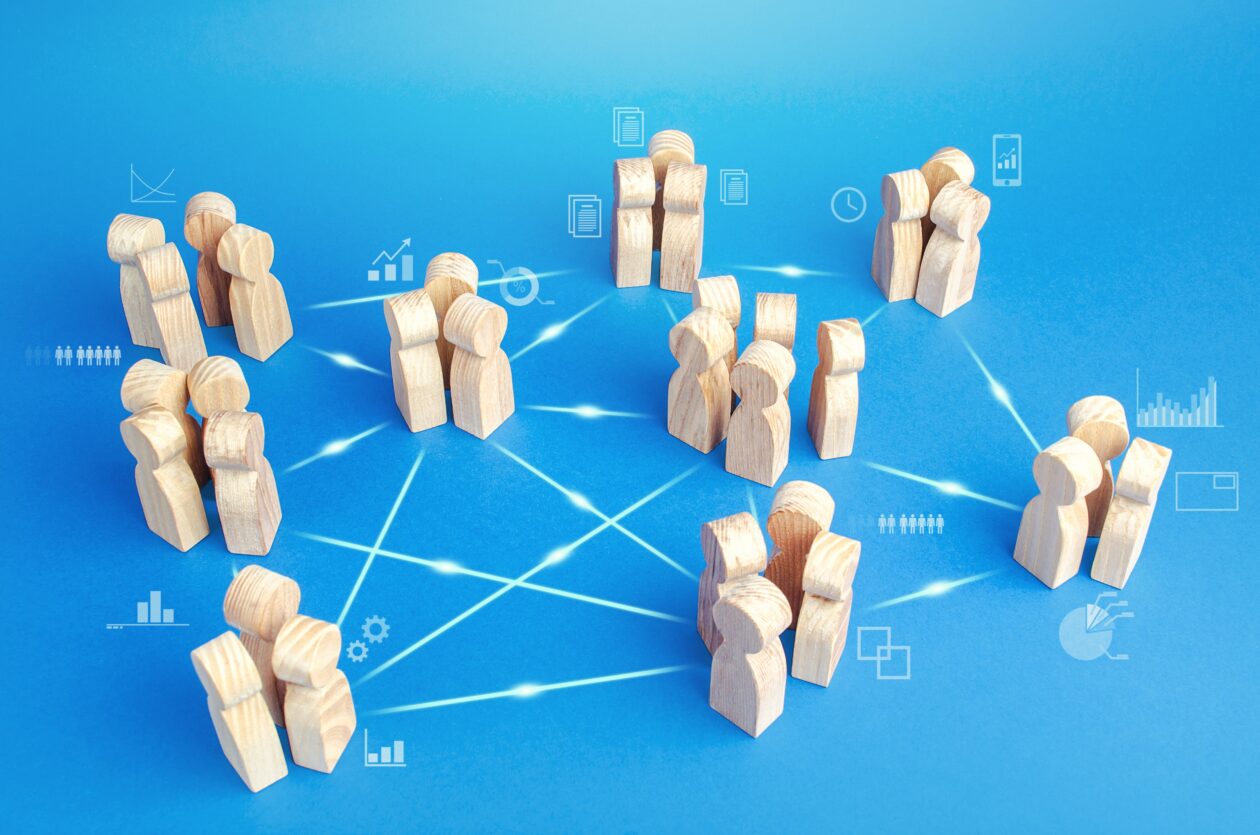For months now, the crypto industry has been battling turbulence, with market prices a fraction of their earlier highs and centralized lending firms once held as the industry’s best crumbling left and right.
While the media primarily reports on the volatile nature of crypto, there are practical use cases being vetted and experimented on to understand the directions where this movement can grow in a way that benefits the average person.
I began my crypto experience as a trader, but found inspiration and meaning when I became a DAO contributor. Some may argue that a DAO — or decentralized autonomous organization — is just a marketing ploy, but I believe it has the potential to upend a traditional business model whether we’re in a bear market or not.
Today, many DAOs are shifting from venture capital-backed projects to a truly collective governance process deploying not just capital but new product innovations in an effort to live the core culture of decentralization and autonomy.
While appending DAO to a project name is en vogue these days, it begs the question of whether they are truly a new form of human coordination or just bull-run fireworks.
Let’s break down the complexities of building a DAO, what it means to be a DAO, and recount some challenges to demonstrate the impact that collective internet randoms can have on the progress of a protocol. And let’s redefine a new way of building businesses, in or out of a bear market.
The nature of DAOs
DAOs have garnered a lot of attention due to their radical organizational structure formed by individuals with a common interest and goal. Rather than hierarchies and exclusive internal voting, DAOs attempt to be structurally flat and democratize the company operation process.
DAO contributors have equal access to the organization and can be fully hands-on in the end-to-end process.
One of the earliest examples of a DAO is Wikipedia. Individual contributors across the globe gather to provide and increase the accessibility of information. This information is then validated and verified by other members of the group, and now millions of people worldwide regard Wikipedia as a legitimate source of information.
In the early days of crypto, individuals would assemble in these organic groups to create decentralized finance tools, which helped users promote financial independence and investment transparency.
As fair launch protocols, non-fungible tokens and other aspects of the ecosystem developed, DAOs started to emerge as viable organizational structures for social and business communities alike.
Examples include PleasrDAO, a DAO for artists and art lovers to gather and purchase NFTs, and MoonDAO, a DAO that united to democratize access to space. There are also ecosystem DAOs and investment DAOs.
By contributing to DAOs, individuals are often rewarded with equity in the protocol, tokens that can be used to vote on proposals and issues and help steer the future of the organization, in addition to their potential monetary value.
Challenges with decentralization
Many may assume DAOs are decentralized and autonomous from the get-go, but that isn’t the case. Rather, decentralization is a process that the organization takes on over time.
DAOs often start centralized. As individuals or entities design governance and incentive frameworks, build the decision-making process and create financial incentive programs for contributors, the operations of DAOs slowly move toward autonomy. This happens because the community is able to own development projects and communicate via Discord, Medium, Telegram and Twitter.
During the growth phase, DAOs also start to implement voting mechanisms that help decentralize the process for code changes at the protocol level, but this can lead to the pitfall of using voting as a signifying mechanism for decentralization for DAOs and protocols.
It is critical that these organizations are built and grown by community contributors all over the world, and not the protocol founders who would still control most decisions. Otherwise, you will have banks like J.P. Morgan launching a blockchain, but because they let you vote on some ideas, now call themselves “decentralized.”
Why many DAOs still rely on centralized technology
In addition to the challenge of creating true decentralization, sometimes projects end up relying on centralized technologies to fulfill their needs. This can undermine the toolings that DAOs build with the intention of operating in a decentralized manner.
For example, many DAOs are still relying on various centralized systems to create a functioning project. This means adopting a centralized cloud system like Amazon Web Service (AWS) to store data and using centralized communication channels like those already mentioned.
It is ironic that we are building a decentralized future on the backbone of AWS. Within the Ethereum community, 60% of its nodes are run on centralized cloud servers, with a quarter of it on AWS.
Although centralized servers were an easy place to start, they should not be the final destination in creating a decentralized financial system. This is because it creates a single point of failure that jeopardizes the privacy of users and the security of the protocol. The recent take crackdown on Tornado Cash by the U.S. government also shows that reliance on centralized web hosts is a weakness that these protocols must overcome to truly experience a decentralized future.
Progressive decentralization in practice
Projects that rely on centralization in the early phases are not to be wholly condemned. This is an easier jumping-off point to ensure a project is protected and has the proper tools to sustain its community in the long haul. What is key is that they progressively decentralize rather than stay reliant on these centralized starting blocks.
Let’s consider treasury operations and protocol design. At the start of a DAO, these aspects of an organization would be centralized as experts on the subject are delegated to make decisions and help streamline the setting up process.
However, as the DAOs grow, the organization would implement multi-signature wallets for their asset management. This is so that no one person can have total control over the treasury, which helps remove the single point of failure, while also helping to democratize the usage of the treasury.
How a bear market can help DAOs
When a bear market strikes, it presents the perfect opportunity for a DAO to focus on its intended purpose — to build a product or service for its community. Like any traditional business when there is an economic downturn, organizations must look inwardly to see where efficiencies can be gained and overhead reduced. Because DAOs should be focused on building regardless of market prices, a bear market positions a DAO to set profit aside and focus on the actual technology at play.
Large treasuries will thin out due to prices dropping, which forces DAOs to trim the fat and take a longer-term outlook on how to sustainably use their treasury. Various small adjustments can be very effective, like reducing paid services and memberships, and focusing on what has been the most fruitful means for engaging with your customers or community.
DAOs of this nature should then focus on ensuring their connectivity and communication with their members are constant and positive, reinforcing that regardless of the ups and downs of financial markets, this organization is here to stay.
If the current market landscape is anything to go by, an inward focus on maintaining a sustainable project or protocol is essential. The bottom line is, if you can build a successful DAO during a bear market, then you will thrive during the bull.
We need DAOs in all market conditions
Decentralization is a process akin to the evolution of cars. Modes of transport evolved from horses and buggies to steamed-powered vehicles, gas-powered automobiles and now, electric cars. However, this progression took centuries of experimentation and input from countless engineers and other contributors across the globe.
Going from horses to electric cars is similar to the decentralization of DAOs. Over a DAO’s lifetime, contributors, investors and lurkers should see it become progressively decentralized as new tools become available to the DAO.
Governance and voting are great starting points but cannot be the only signifier of a decentralized protocol, as decentralized organizations are meant to democratize governance but also decentralize contributions.
Some DAOs may just be a flash in the wind — born out of an immediate need, like Constitution DAO — serving its purpose for a period of time, and then vanishing in the archives of the internet.
But if you want to build an organization for longevity and as part of this movement away from traditional organizations, then there is no better time to focus on building a DAO than during a bear market.
The crypto market will always be volatile, so let’s move away from valuing organizations based on token price, and instead value things like collective ownership, experimentation and building a decentralized protocol that can withstand multiple volatile crypto cycles.
When you’re starting a DAO it is natural to start centralized, but DAOs should seek to decentralize the community and the product as the organization and the industry evolve and mature.
Decentralization will look different for every DAO, but the more we can experiment and provide case studies for future generations to learn from, the better we can upend the traditional business model to bring equity and collective ownership to all.





